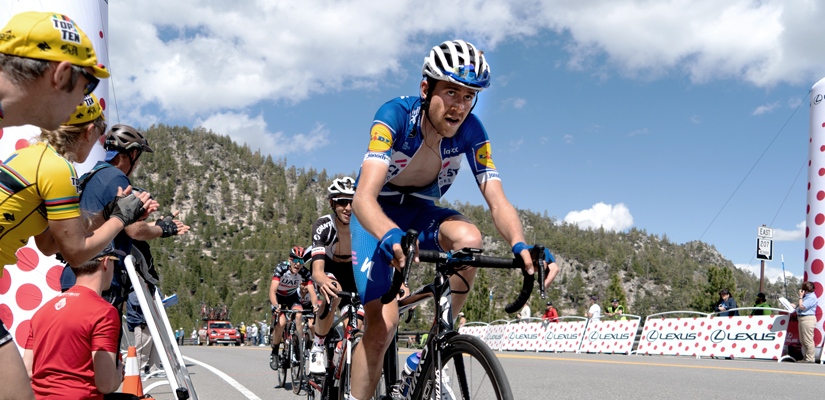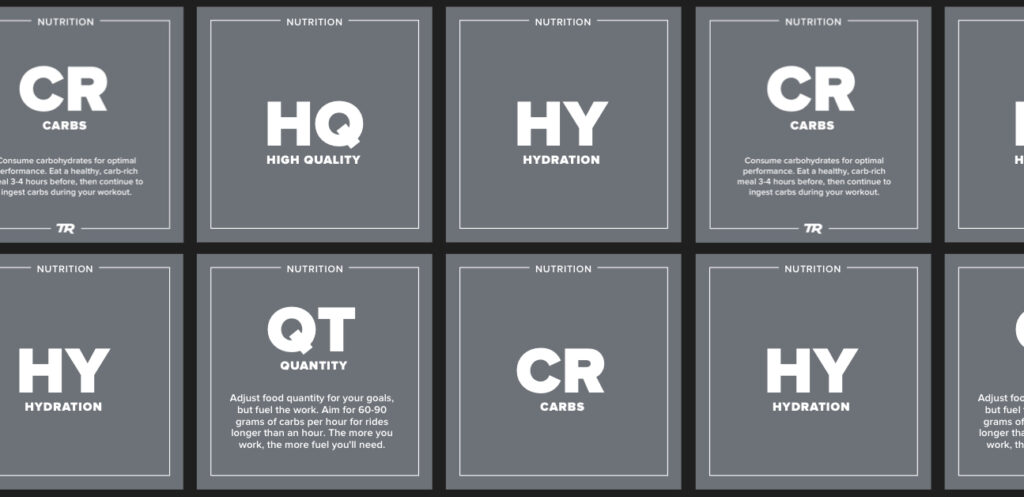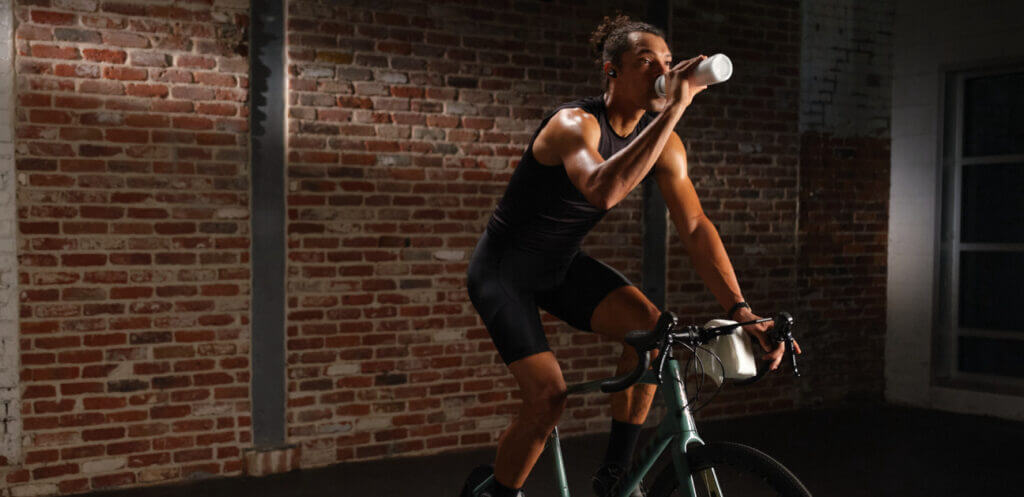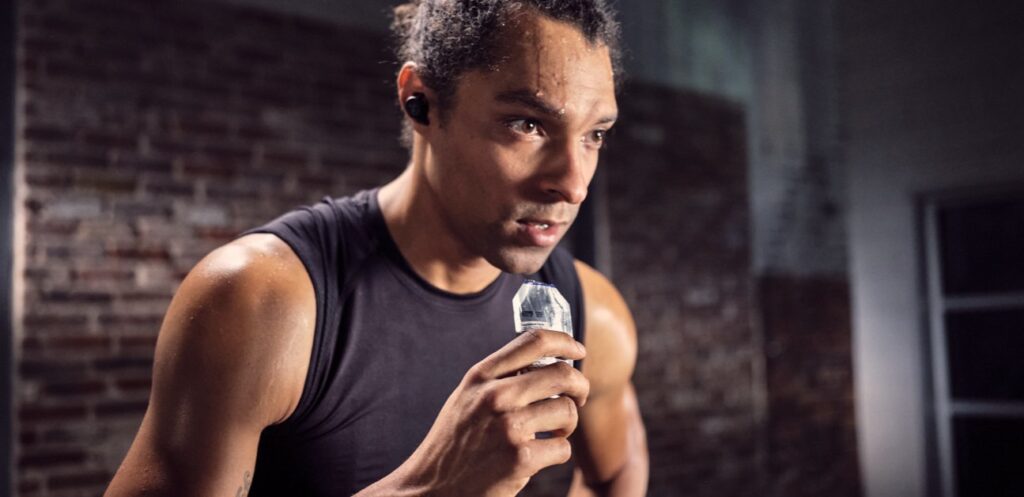What is Bonking? Causes, Dangers, and Prevention

Bonking is a dreaded experience and occurs when the body becomes functionally depleted of glycogen. This exhaustion of fuel shuts down the body’s ability to exert itself. The term gets thrown around a lot, but if you’ve ever bonked, you know how bad it can be and how hard it is to recover from. So just what is a bonk, why is it a bad thing, and how can you avoid it?
For more information on bonking, check out Ask a Cycling Coach Ep. 261.
Bonking Key Takeaways:
- Bonking is caused by a functional depletion of Glycogen
- Bonking can cause muscle loss, weaken the immune system, lead to disruptions in training, and put you in physical danger
- Glycogen depletion can be a beneficial training technique, but should be used carefully and in moderation
- Use training rides to fine-tune your nutritional strategies
- Develop a fueling plan before you get on the bike, and use reminders to follow this plan during your workout or event.
What is Bonking?
Bonking is a common term for the functional depletion of glycogen, brought on by exercise. In other words, it’s the condition in which your muscles run out of fuel, with profound effects on performance and well-being.
Many cyclists use the term bonking to lightly describe a shortage of energy or a late-race moment when the legs cramp, and the engine seems to fail. While these are all symptoms of bonking, and it’s not a scientific term, it does have a specific meaning. Excessive fatigue resulting from going too hard during a ride is usually a symptom of outpacing your ability. On the other hand, Bonking tends to occur only on longer rides when you fully exhaust your energy supplies. Once you experience it, you never forget it, and you never want it to happen again.
What Does Bonking Feel Like?
A true bonk is not just a flat feeling or tired legs. It’s a total inability to continue, marked by nausea, extreme physical weakness, poor coordination, and a profoundly awful feeling. Essentially, bonking is exercise-induced hypoglycemia or low blood sugar. Typically, bonking is preceded by waves of progressively worsening symptoms.
At first, you may feel hungry or exhibit negative self-talk that eventually leads to an increase in your rate of perceived exertion (RPE). As a bonk gets worse, you may develop a headache, nausea, shaking hands, loss of focus, or dizziness. If the bonking continues, so does the likelihood of confusion and the inability to function physically.
It’s essential to recognize what bonking feels like, not only for your health and safety, because the sooner you realize the problem, the quicker you apply the solution.
Bonking Symptoms
- Extreme physical weakness
- Nausea
- Poor Coordination
- Shaking hands
- Dizziness
- Cognitive impairment
Bonking Causes
Bonking occurs when the muscles become functionally depleted of glycogen, the carbohydrate energy stores by which the body fuels itself. Even in the worst bonk, the muscles are not completely empty of glycogen, with somewhere between 10% and 30% of the original supply remaining. However, the shortage of available energy renders the muscles unable to continue working effectively.
Exactly why this occurs is the subject of some debate and research. A traditional theory, known as the “catastrophe model,” says that bonking and exhaustion occur as muscle function reaches its physiological limit and begins to fail. Newer research suggests the brain acts as a “central governor” to limit the muscles preemptively, shutting their function down as energy supplies run low to prevent damage. Whatever the cause, the effect is profound.
Adaptive Training
Get the right workout, every time with training that adapts to you.
Check Out TrainerRoadWhy Bonking is Bad
Bonking is particularly vicious. It feels terrible and affects your general health and wellbeing. Not only can bonking ruin a ride, workout, or race, but it can derail your training and future performance.
Muscle Loss
During exercise, the body is in a catabolic state of stress. An increase in cortisol causes blood glucose levels to rise, making more of the body’s carbohydrate fuel available to enable hard work. An absence of carbohydrates shifts the metabolism to other fuel sources, increasingly burning fat and eventually protein. This is a state in which the body is essentially eating itself, consuming its own muscle as an energy supply. Since we need our muscles to turn pedals, it should be obvious why this is less than ideal.
Immune Suppression
The emerging science of immuno-metabolism suggests a connection between carbohydrates and the immune system’s ability to fight infection. It’s well known that exercise has a beneficial long-term effect on immunity, but overtraining and bonking can cause the opposite. Just like muscles, immune cells contain glycogen and use it as a fuel source. Studies show that depleting this glycogen supply renders the immune cells less effective in doing their job- essentially, your immune cells can bonk!
This is one reason why recovery is so important in training, and why pushing the body to the point of failure in bonking can be dangerous. Suppressed immune function can last from 24-72 hours after the ride, depending on how deeply you run yourself down.
Training Disruption and Physical Danger
Training is cumulative, and each individual workout in a training plan is designed with the following workout in mind. Bonking disrupts this rhythm by creating a massive amount of unproductive fatigue and stress. In many cases, bonking goes hand-in-hand with dehydration, as riders who are not eating enough are often not drinking enough, either. Glycogen itself is water-dense, and running out of it reduces the amount of available hydration within the muscles. Dehydration is dangerous and compounds the fatigue and negative effects bonking leaves behind.
The psychological aspect of bonking can be a powerful deterrent to training, too. As cyclists, we regularly push ourselves further than we think we can. The extremely uncomfortable experience of a bonk might be just the discouraging association your subconscious needs to impose extra limits. Worse, it often leads to situations that are just plain dangerous. Cognitive function declines in tandem with muscular ability, creating temporary mental and physical impairment. Judgement, balance, and vision can all be negatively affected.
Depletion and Adaptation
The purpose of any training is to disrupt homeostasis and force the body to adapt. Riding in a glycogen-depleted state can stimulate more efficient storage and use of glycogen in the future. In addition, riding with low glycogen and glucose levels in the bloodstream causes more fat to be metabolized as fuel. However, both of these adaptations can be targeted through safer and more productive means than an outright bonk. Long/slow distance rides, careful post-ride carbohydrate restriction, and low-intensity rides without extra sugar can work towards this end without significant negative consequences.
How Long does it take to Recover From Bonking?
Usually, the worst nausea and weakness of a bonk can be resolved relatively quickly with ample food and drink, but that doesn’t mean you’ve recovered. By definition, bonking is a significant and disruptive event for your body, pushing you well beyond the stress of ideal or productive training. Unfortunately, this means the effects of a bonk can linger long after the acute effects have resolved.
Just how long depends on how depleted you’ve allowed your body to become, but it’s often worsened by the fact that most bonks occur on big rides. This means in addition to the heavy training load of the ride itself, your body is also burdened with the added recovery of your caloric depletion.
Recovery from a bonk usually takes at least a few days, and sometimes longer. During this time you may find yourself more run down, tired, and hungry than normal, and it’s important to give your body the rest and nutrition it needs. Your immune system may also be compromised for up to 3 days afterward, so take your recovery seriously; getting sick as a result of bonking could disrupt your training for weeks to come.
What to Do If You Bonk
If you find yourself beginning to bonk, remember that food and drink are the solution. Nausea frequently makes eating difficult when bonking, despite the body’s desperate need for fuel. To counter this effect, ingest some liquids with your food. Once your body gets a taste of restorative carbohydrates, the brain usually responds favorably, but it can take several minutes after eating to begin feeling better.
Don’t hesitate to call a friend or family member for a ride if you bonk. Functional depletion is a serious and counterproductive event, and your priority afterward should be a safe recovery. Pedaling miles home in a compromised state can worsen your condition and significantly set back your upcoming training; it’s also potentially dangerous.
How to Avoid Bonking
The best way to avoid bonking is pretty simple—give your body enough food and drink to stay fueled during your workout! This sounds easy, but it’s often more challenging than you might think. Here are some helpful tips to keep yourself fueled.
Figure Out Your Consumption Rate
Each of us have our own unique carbohydrate and caloric intake requirement, and individual tolerance for what we can stomach during a workout or race. Don’t wait until race day to learn what works for you. Training rides are a great time to experiment with different fueling schedules, and to try out solid vs. liquid foods or a combination of the two. Also, keep hydration in mind and try different electrolyte drinks and mixes. Sweet Spot workouts are ideal for this experimentation; proper nutrition makes these workouts noticeably easier, and they are just hard enough to make a decent approximation of a race’s demands.
Develop a Plan Before Your Ride
Decide before your ride begins how much you’ll need to eat and drink, and set benchmarks for yourself to follow. This may mean knowing to eat a certain number of gels by a particular point in the ride, or you might even set yourself a timer to remember to eat something every half hour. If you’re riding with a friend or teammate, look out for each other and offer reminders to maintain good nutrition together. Whatever strategy you choose, plan ahead- once you’re on the bike, it’s too late to reliably make smart fueling choices.
More on Cycling Nutrition and Bonking:
For more cycling training knowledge, listen to Ask a Cycling Coach Podcast— the only podcast dedicated to making you a faster cyclist. New episodes are released weekly.
References
- Noakes, T., Peltonen, J., Rusko, H. (2001). Evidence that a central governor regulates exercise performance during acute hypoxia and hyperoxia
https://jeb.biologists.org/content/204/18/3225 - Murray, B., Rosenbloom, C. ( 2018). Fundamentals of glycogen metabolism for coaches and athletes
https://www.ncbi.nlm.nih.gov/pubmed/24552392 - Neiman, D., Wentz, L. (2018) The compelling link between physical activity and the body’s defense system
https://www.sciencedirect.com/science/article/pii/S2095254618301005


